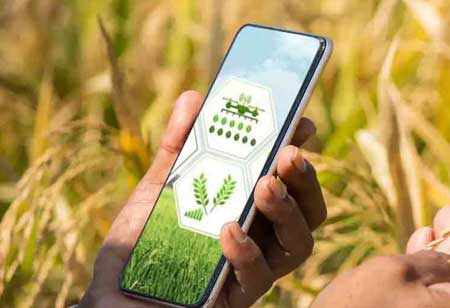Thank you for Subscribing to Agri Business Review Weekly Brief
Indoor Farming Redefining the Agricultural Landscape
A key advantage of indoor farming is that it does not require equipment like tractors or combines and uses less water than growing outdoors.

By
Agri Business Review | Thursday, December 01, 2022
Stay ahead of the industry with exclusive feature stories on the top companies, expert insights and the latest news delivered straight to your inbox. Subscribe today.
Indoor farming is reshaping the agricultural landscape by allowing people to grow healthy, abundant food virtually anywhere year-round, reducing the need to transport food long distances.
FREMONT, CA:A key advantage of indoor farming is that it does not require equipment like tractors or combines and uses less water than growing outdoors. Instead, it depends on other types of technology, such as cameras and software, to grow food inside. While it is common to grow plants inside a building like a greenhouse, growing leafy greens on a smaller scale are more like gardening.
Another significant advantage of indoor farming is that it allows growers to optimise the growing process for higher yields. Droughts, storms, insect infestations, and other hazards of outdoor farming are avoided in this type of farming. Instead, farmers can control everything, down to the number of light plants they receive on a minute-by-minute basis. Likewise, indoor farming has numerous advantages over traditional farming practices.
Less Land Usage:A vertical farm can grow more plants on a given area of land than a single outdoor field. This is highly beneficial in a densely populated region where there may not be much arid land for agriculture.
Urban Agriculture:Indoor farms do not require a lot of open space to operate, particularly vertical farming. Old and unused industrial buildings in urban areas can easily be repurposed for indoor farming. Growing in urban areas can potentially impede climate change progression by allowing cultivated land to be rewilded.
Year Round Yields:Unrestrained by weather, indoor farms can grow food every day of the year with a suitable temperature for plants. Growing indoors indicates operating within a food system that is not reliant on climate change.
Decreased Transportation:In addition to allowing for year-round growing, indoor agriculture also allows for the growing of food in regions where that food does not normally grow, thereby helping to cut down on food transportation. Instead of hauling food into a city, crops can grow in the middle of the city. Rather than shipping vegetables to dry, inhospitable, or excessively cold regions, growing food in the city is now possible. Food stays fresher for longer periods of time and reduces food waste by cutting down on the amount of time in transit.
Healthier and Abundant Crops:Being able to optimise everything about a plant’s growing cycle, from the number of nutrients they receive to the amount of light they get, indicates farmers can grow healthier and more abundant crops.
More Environmentally Friendly:Crops grown indoors do not require pesticides or herbicides are usually produced with fewer eaters, and do not cause fertiliser runoff that is detrimental to the local environment. Although indoor farming is energy-intensive, many indoor farming operations offset this high energy use by taking measures to use as much renewable energy as possible.
With its ability to grow healthy, bountiful food virtually anywhere year-round, indoor agriculture can reshape the entire agriculture landscape. It is conceivable that every urban centre will have at least one indoor farming operation in its midst. In the future, new commercial or residential buildings will be erected with a portion of their floors dedicated to indoor farming to help feed the people in those buildings.
If food can be grown within a given space and shipped a short distance from one building to another or from one floor to another, there will be less need to transport it long distances. Indoor farming will take agriculture back to its roots of being small, highly localised operations instead of sprawling, industrial mega-farms generating huge amounts of waste. Such operations will have the additional benefit of supplying locals with freshly grown produce in all seasons. With indoor farming operations, agriculture will look very different in the future.





